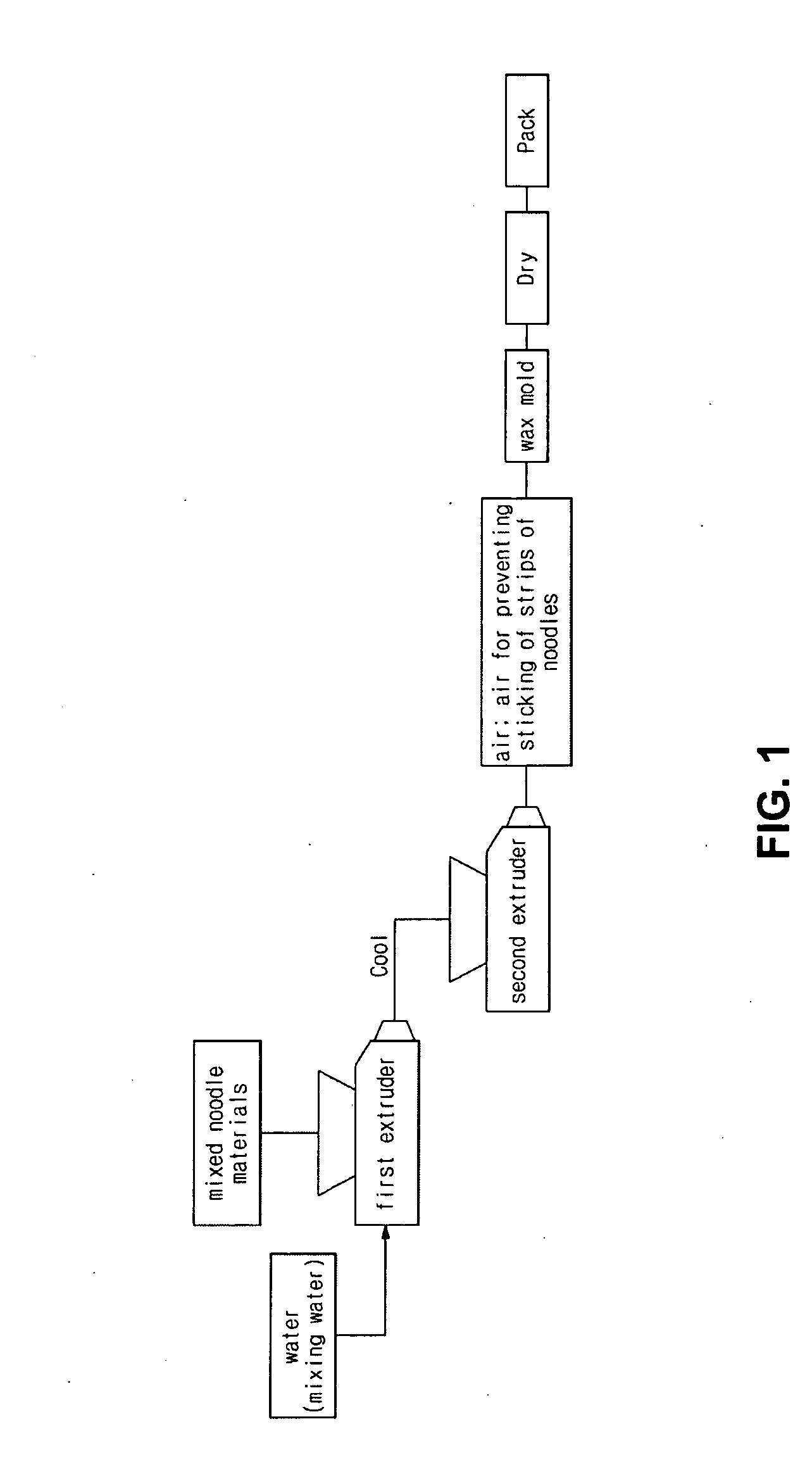Method for producing extruded noodles
a technology of extruded noodles and noodles, which is applied in the field of extruded noodles, can solve the problems of excessively low productivity, low speed of moisture penetration into noodles, and labor-intensive processes, and achieve the effects of uniform quality improvement, preventing noodles from being stuck to each other, and reducing the generation of cracks of noodles
- Summary
- Abstract
- Description
- Claims
- Application Information
AI Technical Summary
Benefits of technology
Problems solved by technology
Method used
Image
Examples
embodiment
Preferred Embodiment
[0027]Mixing of Noodle Materials
[0028]10˜90% by weight of wheat flour, and 10˜90% by weight of one or at least two selected from the group consisting of starch, such as potato starch, sweet potato starch, tapioca starch, and corn starch, buckwheat flour, wild rice flour, and acorn flour are put into a first extruder.
[0029]Kneading and Gelatinizing
[0030]Using the first extruder, the noodle mixture is kneaded into dough and the dough is gelatinized by heat, simultaneously.
[0031]Particularly, in accordance with a method for producing extruded noodles of the present invention, the amount of mixing water, which is mixed with the noodle mixture, is 10˜50% of the weight of the noodle mixture. Compared with general extruded noodles (cold noodles) having an added water amount of 55˜75%, a comparatively small amount of water is mixed with the noodle mixture in the present invention. When the amount of the mixing water is more than 50%, strips of noodles are stuck to each o...
PUM
 Login to View More
Login to View More Abstract
Description
Claims
Application Information
 Login to View More
Login to View More - R&D
- Intellectual Property
- Life Sciences
- Materials
- Tech Scout
- Unparalleled Data Quality
- Higher Quality Content
- 60% Fewer Hallucinations
Browse by: Latest US Patents, China's latest patents, Technical Efficacy Thesaurus, Application Domain, Technology Topic, Popular Technical Reports.
© 2025 PatSnap. All rights reserved.Legal|Privacy policy|Modern Slavery Act Transparency Statement|Sitemap|About US| Contact US: help@patsnap.com

